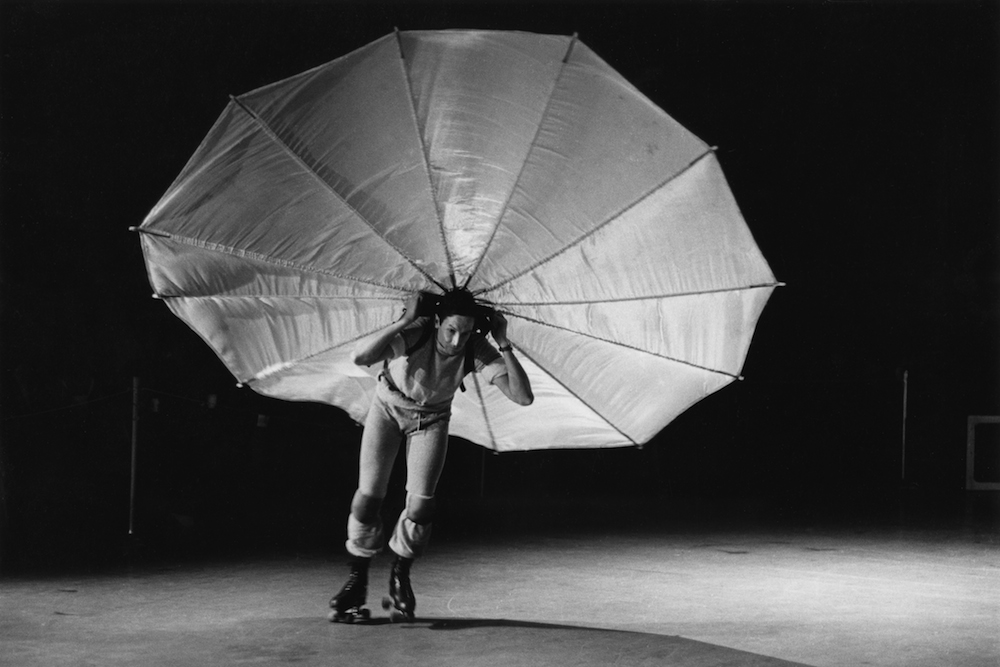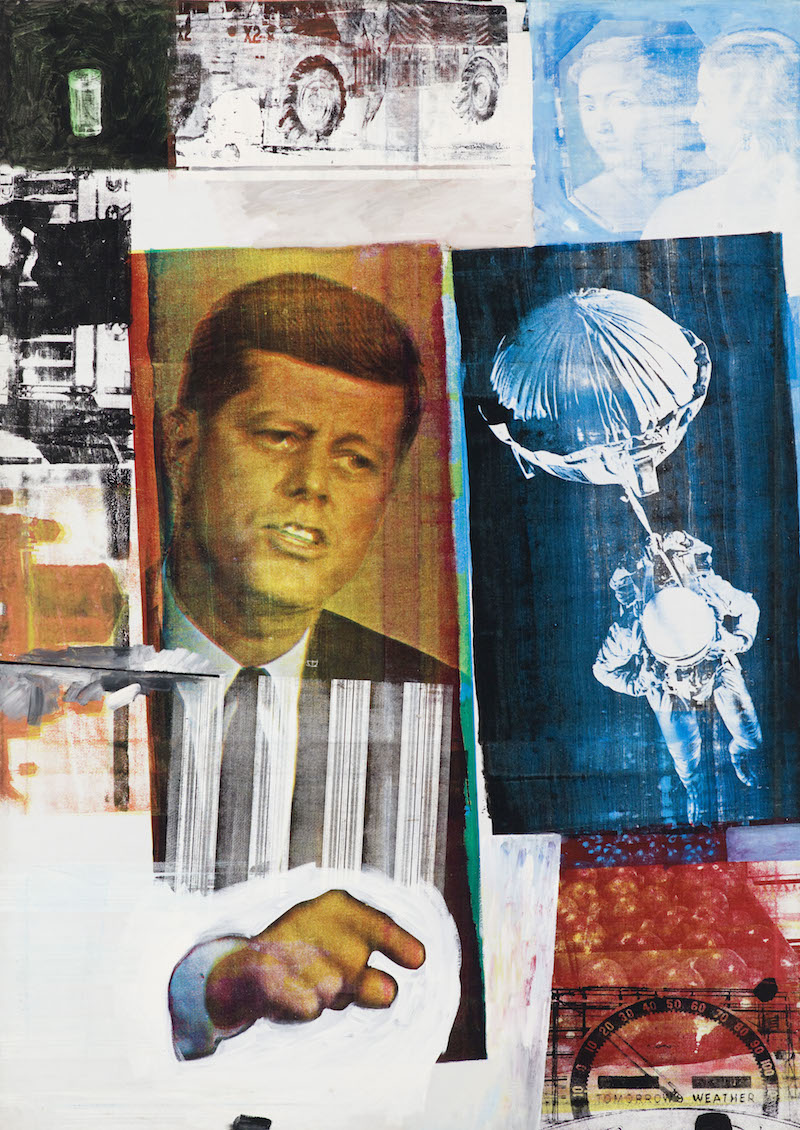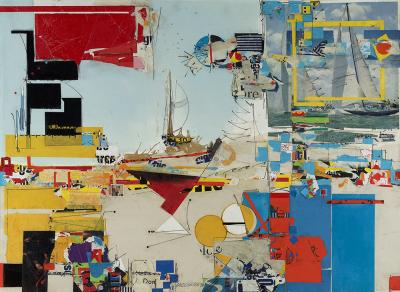Monumental Robert Rauschenberg Retrospective Opens at Tate Modern
Robert Rauschenberg
On view through April 2, 2017
Tate Modern, The Eyal Ofer Galleries
Bankside, London SE1 9TG, UK
A major exhibition at Tate Modern in London just opened with Modern American master Robert Rauschenberg (1925-2008) at its center. Organized in collaboration with the Museum of Modern Art in New York, this is the first posthumous retrospective and the most comprehensive survey of the painter and graphic artist’s work in decades.
A multi-talented artist who adroitly practiced painting, sculpture, photography, printmaking, technology, stage design and performance, Rauschenberg never met a medium he couldn’t translate into art. His six-decade long career spanning the second half of the twentieth century is chronicled in the exhibition, which will travel to the MoMA in May 2017 and the San Francisco Museum of Modern Art in November.
.jpg)
- Monogram, 1955-59. Combine: oil, paper, fabric, printed reproductions, metal, wood, rubber shoe-heel, and tennis ball on two conjoined canvases with oil on taxidermied Angora goat with brass plaque and rubber tire on wood platform mounted on four casters. 106.7 x 135.2 x 163.8 cm. Moderna Museet, Stockholm. Purchase with contribution from Moderna Museets Vänner/The Friends of Moderna Museet. © Robert Rauschenberg Foundation, New York.
Every chapter of Rauschenberg's career is represented by major international loans that rarely travel. His iconic Combines, hybrids between painting and sculpture – including Monogram (1955-59), a paint splattered taxidermied goat in a car tire surrounded by street signs and Bed (1955) – as well as his signature silkscreen paintings, which brought politics, mass media imagery, and street scenes into his work, will be on view. Retroactive II, created in 1964, portrays John F. Kennedy, who had been recently assassinated.
The exhibition starts from his early experiments while he was a student at Black Mountain College in North Carolina, a school in which he enrolled after he studied at the Kansas City Art Institute and the Académie Julian in Paris. In the late 1940s and early 1950s, he embarked on his first collaborations with his friends and peers, John Cage, Merce Cunningham, Jasper Johns, David Tudor, Cy Twombly, and Susan Weil. His Erased de Kooning Drawing was a product of his experimentation here. He founded Experiments in Art and Technology (E.A.T.), a non-profit organization that developed collaborations between artists and engineers in the 1960s, helping to initiate conversations between the visual arts, performance, and science worlds. The work he produced here is also on view at the retrospective.
Robert Rauschenberg traveled extensively throughout Europe, North Africa, the Americas, and Asia throughout the second half of the 20th century. His work throughout this period exemplified how he skillfully played with unconventional materials. The Rauschenberg Overseas Culture Interchange (ROCI), a multi-country tour to encourage world peace and understanding, is featured as part of the retrospective exhibition. The ROCI traveled through Mexico, Chile, Venezuela, Cuba, Germany, the Soviet Union, Malaysia, Japan, China and Tibet between 1984 and 1991.

- Photograph of Robert Rauschenberg’s Pelican (1963) as performed in a former CBS television studio, New York, during the First New York Theatre Rally, May 1965. © The Robert Rauschenberg Foundation, New York. Photo: © Peter Moore © Barbara Moore / Licensed by VAGA, NY. Courtesy of Paula Cooper Gallery, New York.
On January 27-28, 2017, the Trisha Brown Dance Company will re-stage her famous work Set and Reset in the Tanks using the original set and costumes designed by Robert Rauschenberg. Rooms in the retrospective exhibition embrace his penchant for image-making with new materials. Prints on translucent textiles, polished steel and tarnished aluminum, as well as inkjet paintings from later in his career and dozens of images taken through the use of digital technology will be on view.
Robert Rauschenberg never stopped innovating throughout the course of his life. His early work anticipated the pop art movement with contemporaries like Andy Warhol. He was awarded the National Medal of Arts in 1993, and received the Leonardo da Vinci World Award of Arts in 1995. The Robert Rauschenberg Foundation was founded by the artist in 1990 to promote world peace and raise awareness about environmental and humanitarian issues. This retrospective exhibition is supported by the Foundation, which owns many of his works from every period of his career. This is the first major exhibition in 35 years of Robert Rauschenberg’s work in England, as well as the first major retrospective of the artist since his death in 2008.















.jpg)

.jpg)
















